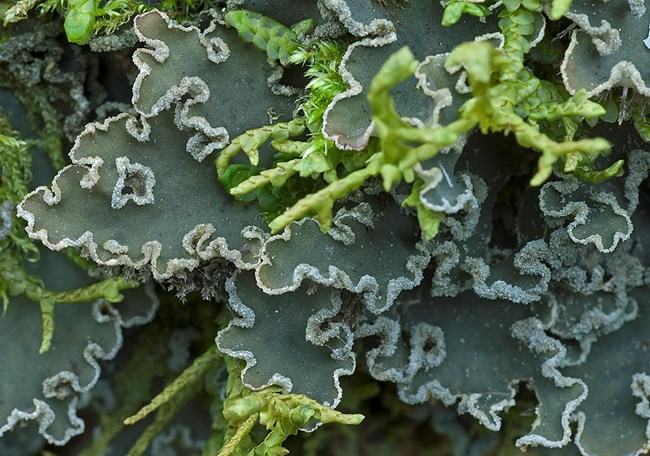Last updated: August 7, 2025
Article
Lichens as Bioindicators
A conservation practitioner can use an indicator species as a surrogate for overall biodiversity, monitoring the outcomes of management practices by measuring the rise or fall of the population of the indicator species.

© Richard Droker
What are Lichens?
They are a symbiotic relationship between algae and fungi. The fungus provides shelter for the algae and the algae provides food for the fungi. Lichens do not have roots; instead they receive all their nutrients from the atmosphere.
Lichens as Bio-Indicators
Lichens are sensitive to atmospheric pollution such as nitrogen (N) because they receive all their nutrients and water from wet and dry atmospheric deposition (fall out). Nitrogen deposition can increase the load of nutrients. Too much N can harm and kill the algae’s chlorophyll which is used to produce sugars feeding it and the fungi.
Certain species of lichen are more tolerant of N than others. Scientists monitor lichen communities. If an increase in N tolerant species in combination with a decrease in N sensitive species occurs this may indicate an increase in atmospheric N deposition.
Lichens are the “canaries in the coal mine” of N deposition. A shift in their species composition and/or their health exemplifies the potential beginning of ecosystem decline due to N deposition.

nadp.isws.illinois.edu/nadp/
Since nitrogen deposition occurs as both wet and dry measurements two collecting systems are used. The NADP National Trends Network (NTN) measure nitrate (NO3-) and ammonium (NH4+) weekly in rain and snow samples over 250 U.S. sites.
The U.S. Environmental Protection Agency (EPA) Clean Air Status and Trends Network (CASTNET) measures gaseous HNO3 and dry deposition particulate NH4+ and NO3- across 94 U.S. sites.
The NADP Critical Loads of Atmospheric Deposition science committee (CLAD) works across science, management, and government. It meets twice yearly at the spring and fall NADP meetings with goals to:
- Facilitate technical information sharing on critical loads topics within a broad multi-agency/entity audience;
- Fill gaps in critical loads development in the US;
- Provide consistency in development and use of critical loads in the US;
- Promote understanding of critical loads approaches through development of outreach and communications materials.

iNaturalist.org
While you are out hiking or taking a walk around your urban neighborhood please submit lichen observations to iNaturalist. This will inform researchers and scientists of the distribution and potential changes in ecosystem processes and services in urban and natural environments.
